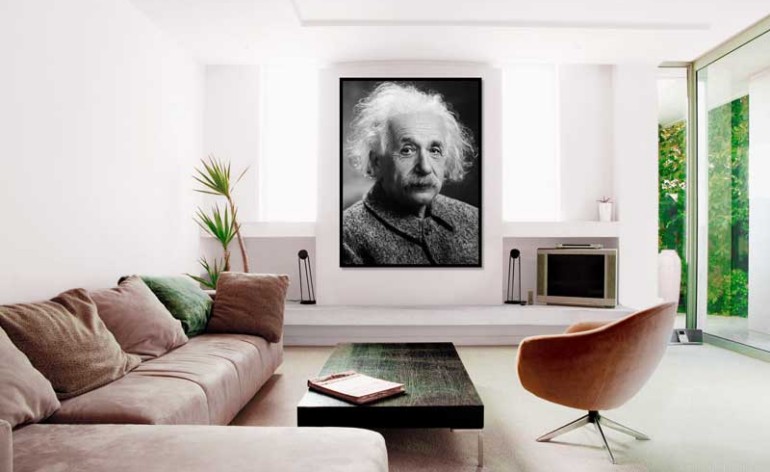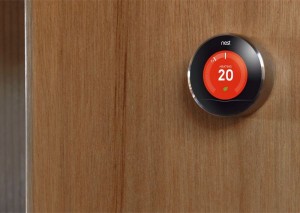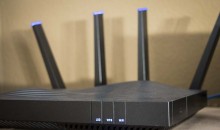What Makes a Smart Home Smart?
Since we’re focused mostly on audio and home theater, the question What makes a smart home smart? has to begin with the integration of technologies all over your home which supports the things you do on a regular basis. This includes your audio and video needs as well as home security, temperature control, and even environmental devices like sprinkler systems and thermostats. What makes a smart home smart is the integration of all of these things in a way that allows two-way communication to you, the user, so that you can monitor and control everything via your smartphone and/or a centralized interface. Let’s look at some of these things one-by-one in a general overview so that you can begin to understand the big picture when it comes to making your smart home truly smart.
Streaming Music Throughout Your Smart Home
Streaming the music you listen to throughout your home may already be something you do on a regular basis. To accomplish this, you just need wireless integration with your smartphone and/or wired connectivity to your computer or hard drive storage-based media. A great example of a product that easily facilitates this type of integration is a surround receiver with WiFi, AirPlay and Bluetooth, and a network connection. You want something that supports streaming music and apps like Spotify and other services. Not only can you send these devices audio from your smartphone, tablet, or DLNA-compatible computer or server—you can fully access and serve music to your heart’s content. But for a smart home to be smart you need slightly more than that. Your AV receiver or control system will need multi-zone capability. That way it can not only receive these music streams and sources, but it can also route them throughout your home as needed. Want music in the kitchen only? No problem. How about outdoor speakers for the barbecue? You’ve got it covered.
In addition to good source and zone control, you also need systems that integrate well and which can be universally controlled by a central remote control or whole home control system. Let’s move on to lighting next.
Smart Home Lighting Control
Lighting is a big deal. When you have a party, or want to automate the lights in your home while you’re away on vacation, a good lighting control system will fill those needs. But lighting control is more than that. Imagine a modern 2000 square foot home with a front porch. By the front door you’ll find a 5-gang switch plate (outdoor porch light, interior foyer light, living room 3-way light, outdoor post lantern light, and an outdoor outlet (for Christmas lights). Guess what? With a sophisticated lighting control system you can store all of those controls in a single gang box! Lighting control systems are nothing to be left for the end of a project, but rather something that should be carefully planned in advance, allowing a home owner or builder to decide on what features or aspects of lighting control are needed—and, more importantly, how that affects the electrical wiring and layout in a home.
When you integrated lighting control, you also gain the advantage of lighting automation. Some systems require a complete ground-up installation, but others allow you to replace existing switches with “smart switches”, turning your “regular” home into a smart home—at least as far as lighting is concerned. Once installed, most of these systems are accessible via a smart phone or dedicated touch panel. Dimmable fixtures and the ability to “learn” your patterns further allow for customized lighting levels and also deliver opportunities to save money on monthly bills through the use of energy-saving patterns. when you’re trying to understand what makes a smart home smart, you can’t go very far without running into proper lighting integration.
Wireless Security on Your Smart Home
While traditional security systems included hard-wiring and prewiring your home (something that is still recommended for new construction), there is a growing need for retrofitting wireless security into older or existing homes. These new wireless security systems are capable of near-infinite expansion and offer everything from window break protection, to active home monitoring via integrated microphones that come on when you are way and the alarm is triggered. Most security systems are monitored, but more and more that is becoming an option, and systems are being designed with remote alerting to your cell phone as well as the recording and storing of video. Of course, most systems also have the option of adding an ear-splitting alarm that serves to scare off any potential intruders.
As you think about remote monitoring of your smart home, don’t forget about the integration of security so that it can become one of the things you check on and automate while you’re away.
Remote Monitoring and Local Control is What Makes a Smart Home Smart
There’s no doubt that having local and remote access over your systems is a large portion of the smart home puzzle. But what I want to impress upon you is that uniting all of your functions under one digital “roof” is also important. With the advances of standardization across ZigBee wireless and other technologies, third party developers are coming up with more and more ways to unite your devices under a single app. Having the ability to check in on your home security, monitor climate control (did I set the thermostat before I left?), alter the lighting, and see what devices are being used throughout the home (power monitoring) is even more wonderful when it can be done under from the same smart phone app. This goes double for controlling all of those features. The obvious next consideration is your…
Home Theater as Part of Your Smart Home Ecosystem
When we start to talk about consolidation of application control, I can’t help but think of the recent strides by Logitech’s Harmony remotes and Universal Remote Control (URC) to incorporate many, if not all, of the newest systems into a single control interface. These companies recognize the importance of wanting to have a reliable and consistent experience across all devices in your home. Even though these systems center around improving your home theater, they do more than just allow you to hide your electronics in a closet. In fact, the particular challenge for these whole home control systems comes with respect to remote monitoring. Many remote control systems aren’t set up for easy use away from the home, but more and more these control systems are beginning to understand what needs to happen to make them more usable and flexible in those applications as well.
Where do we go from here? The sky’s the limit, but the answer to the question What makes a smart home smart is becoming a lot less complicated than it was just a few short years ago.







